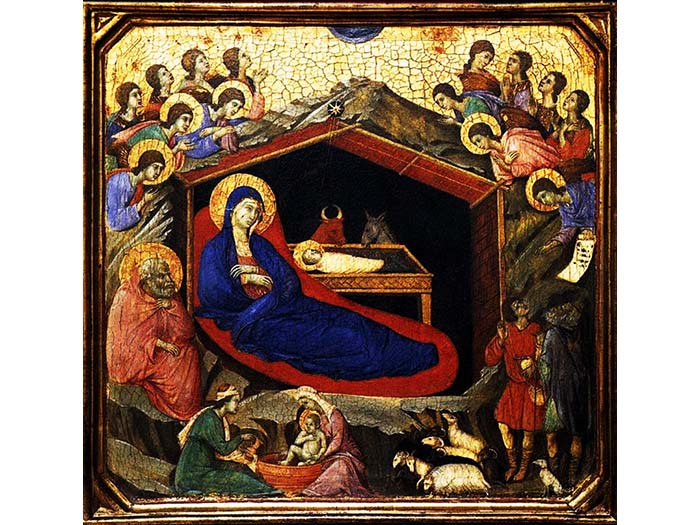Prelude
Today the Virgin gives birth to him who is above all being,
and the earth offers a cave to him whom no one can approach.
Angels with shepherds give glory,
and magi journey with a star,
for to us there has been born
a little Child, God before the ages.
Bethlehem has opened Eden, come, let us see;
we have found delight in secret,
come, let us receive the joys of Paradise within the cave.
There the unwatered root whose blossom is forgiveness has appeared.
There has been found the undug well
from which David once longed to drink.
There a virgin has borne a babe
and has quenched at once Adam’s and David’s thirst.
For this, let us hasten to this place where there has been born
a little Child, God before the ages.
(Note, this excerpt is taken from the English translation by Fr. Ephraim Lash, On the Life of Christ: Chanted Sermons by the Great Sixth Century Poet and Singer St. Romanos (Sacred Literature Trust Series); the full English text of this translation is available here)
See other Nativity poems:
- A Child My Choice, by Robert Southwell
- Born This Eve, by Lynne May
- On the Nativity of Christ, by Romanos the Melodist
- The Incarnation – A Christian Hymn, and A Star, by Sean O’Neill
Top image credit: Nativity painting on wood panel by Italian artist Duccio di Buoninsegna, between 1308 and 1311, in the National Gallery of Art in Washington D.C., USA. Image source at Wikimedia.com, in the public domain.
Little is known about St. Romanos himself. He was born in the late 5th century, probably in Emesa, Syria, of Jewish descent. He served as deacon in the church of the Resurrection in Beirut before coming to Constantinople during the reign of Anastasius I (491-518). According to his Life, he was miraculously endowed with the gift of writing kontakia. The Virgin appeared to him in a dream on Christmas eve, and gave him a scroll which he swallowed. The poet rose from sleep, gave praise to God, went straight to church and, mounting the pulpit, chanted the kontakion which appears below. We know that he lived beyond the middle of the 6th century, and that he was buried in the church of the Virgin in the Kyrou Quarter of Constantinople. He is commemorated in the Orthodox Church on October 1st, along with his disciple Ananias. (source from St. Romanos the Melodist, On the Life of Christ: Kontakia (Archimandrite Ephrem Lash, tr.: Harper, San Francisco, 1995)



